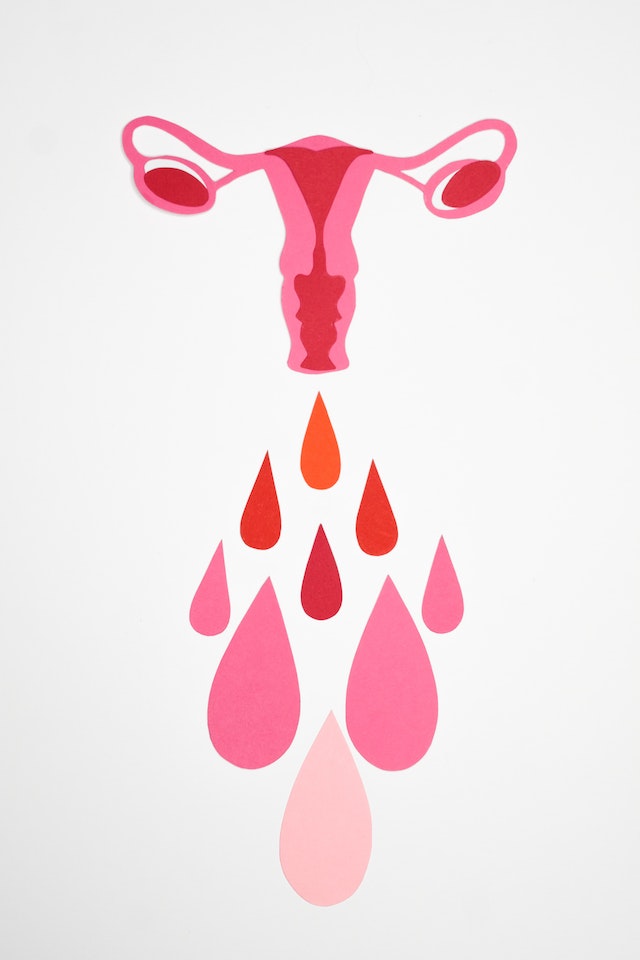Bloody yeast infection discharge is normal or not?
This is what we will know in this article so keep reading to learn more about why bloody yeast infection discharge occurs and worry about it or not.
A yeast infection may cause bloody yeast infection discharge but the light bleeding or spotting is not anything to be upset about.
People with a risk of bleeding during a yeast infection are who have recurring yeast infections or irritated vaginal tissue.
Now we will cover symptoms of yeast infection, also describe the causes, when to see a doctor, treatment, and prevention.
First, let us know what’s a yeast infection.

What is a yeast infection
A yeast infection also called (candida) is a popular kind of fungal infection that occurs when a woman has too much yeast in her vagina.
Yeast is considered a type of fungus, and candida is considered a specific type of yeast.
It occurs when a woman notices an excessive growth of the candida Albicans fungus in her vagina.
Yeast infection mainly affects the vagina, the vulva, the external reproductive organs, and other parts of the body.
Vaginal yeast infection occurs most commonly after puberty and before menopause.
Causes of bloody yeast infection discharge
Bloody yeast infection discharge may occur due to various reasons like weakness in the immune system, pregnancy, reduce estrogen hormone after menopause, and hormonal changes during the menstrual cycle.
Antibiotics, birth control pills, and certain steroids may be factors that can increase your risk of a yeast infection.
If the pH of a woman's vagina is imbalanced, the normal yeast which lives in her vagina will be increased in number and the immune system lost its control of the yeast growth leading to bloody yeast infection discharge.
Also, anything women put in their vaginas may irritate and lead to disrupting the pH balance such as creams or perfumes.
A yeast infection may cause bloody yeast infection discharge but the light bleeding when wiping on the toilet paper or spotting on your underwear is not anything to be upset about.
This bloody yeast infection discharge occurs because of cuts or tears in vaginal tissue which occur because of the inflammation of the tissue.
Signs & symptoms of bloody yeast infection discharge
Everyone who has a yeast infection doesn’t necessarily have bloody yeast infection discharge so it’s better to know the other signs and symptoms of yeast infection which include
- Vaginal and vulvar itching.
- Swelling of the vagina sometimes with a rash.
- Burning sensation during peeing or intercourse.
- Bloody discharge or spotting between periods.
- Cuts or cracks in the skin around the genitals.
- Change in color, odor, or amount of discharge from the vagina.
- Change in consistency of the vaginal discharge such as white, thick, or watery discharge.
By the way, it is not necessary that everyone suffers from these symptoms or has the same symptoms.

When isn’t bloody discharge normal
If the genital bleeding is heavy or didn’t disappear after your treatment it may be a sign that the bleeding isn’t a yeast infection it may be due to other conditions such as:
- Chlamydia
- Ghonorhea
- Trichomoniasis
- Atrophic vaginitis
- Bacterial vaginosis
- Urinary tract infection
- Kidney stones
Whereupon you must visit your doctor, investigate by healthcare, and don’t depend on over-the-counter medications or home remedies to prevent condition deterioration or complications.

When do you need medication help or visit the doctor
It’s a better concept to contact your healthcare when you notice abnormal bleeding away from your every menstrual cycle.
It’s important to see a doctor when you have your first yeast infection or heavy bleeding and you are confused if this is a yeast infection or not.
If you have a fever or bleeding that doesn't stop by over-the-counter treatment.
Also if you notice other various signs and symptoms differ from what we mentioned earlier.
Your doctor will diagnose your condition and direct you to the right prescription because if your treatment is delayed or left untreated you will suffer from dangerous complications like infertility.
Treatment & prevention of bloody yeast infection discharge
Treatment
Yeast infection can be treated by antifungal medications which may take orally, creams, or suppositories.
Also, if the patient didn’t want to see a doctor, over-the-counter medications are available and need to take in around 7 days.
If the patient with recurrent a yeast infection he may need a long course of antifungal drugs probably for up to 6 months.
Prevention
We can prevent a yeast infection from reoccurring by making some lifestyle habits such a
-
Wearing underwear cotton as it breathable material.
-
Avoid wearing tight clothing, especially around the genital and instead it by loose-fitting clothing.
-
Keeping the genital area dry well after bathing or toilet.
-
Avoid using irritant products like perfumes, douches, or sanitary pads.
-
Avoid repeating douching as the genital area can clean itself on its own, also douching may disrupt the good bacteria which live in your vagina and increase the fungal bacteria leading to vaginal infection.
-
Changing the sanitary pads and products every 4-8 hours.
-
Always keep the genital area in good hygiene.
-
Avoid using soaps with deodorant or antibacterial action.
-
Rinsing the genital areas well after the toilet.
-
Avoid staying in wet clothes like gym suits or bathing clothes.
-
Wiping yourself from front to back after the toilet to prevent the spreading of fecal bacteria to genital areas.
-
If you have diabetes Control your blood sugar levels.
Conclusion
Yeast infection and bloody yeast infection discharge can’t disappear on their own so only antifungal medications can break down fungus (yeast infection) and will treat the vaginal yeast infection.
Antifungal medications can treat yeast infection and bloody yeast infection discharge after some days to a week but severe cases may take longer time.
Your doctor will prescribe the best treatment forward according to the cause of the bleeding.
To prevent recurrent infection make sure you take the antifungal medications as prescribed and don’t stop taking them immediately.
Finally, yeast infections are very common and highly treatable so don’t worry.
Read more about:
Genital Warts Treatment in Pregnancy


You must be logged in to post a comment.